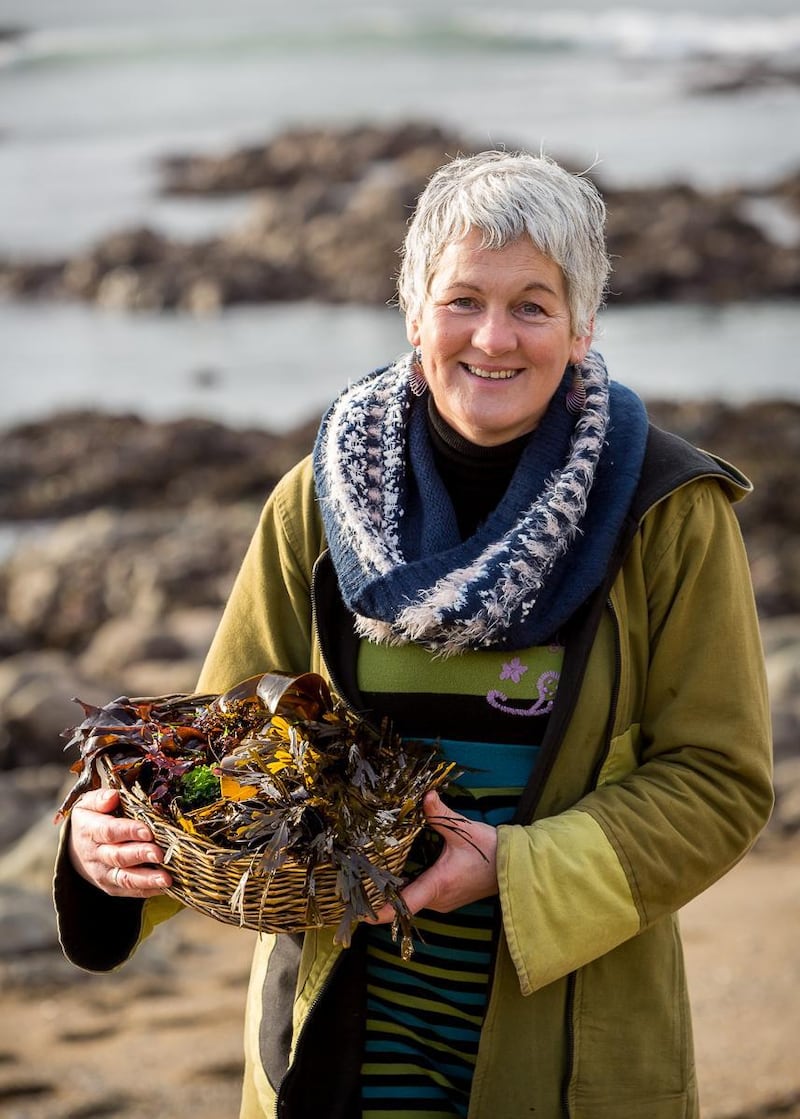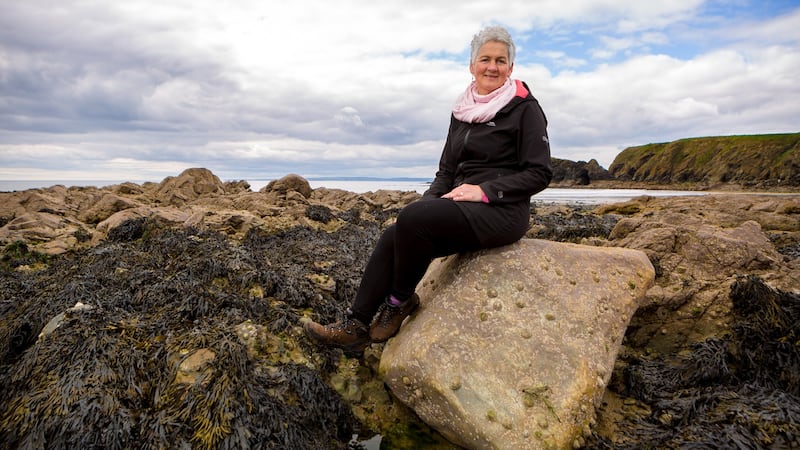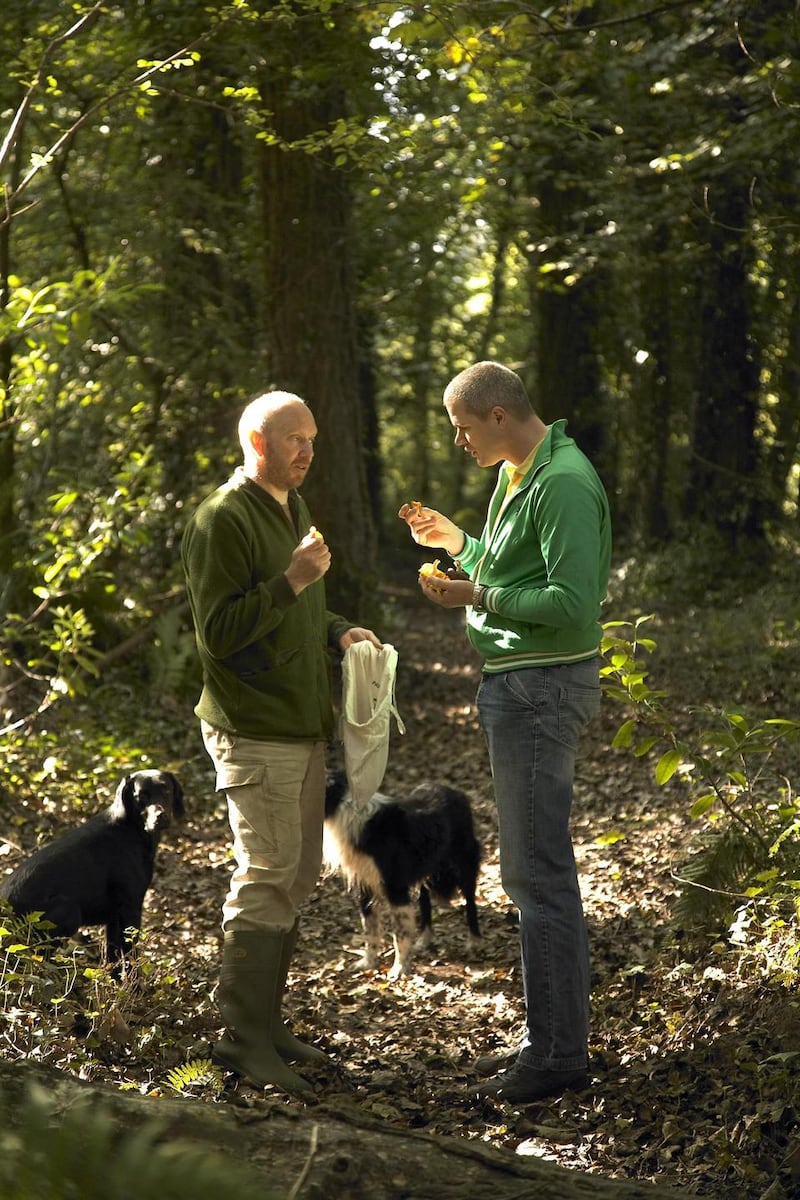Growing up in Arklow on Ireland’s east coast, beachcombing was a regular activity. I still love walking the dogs along the beach, stopping to gaze into rock pool, losing myself in the reflections and calm movements. Yet, it was only more recently that I looked past the startling sea anemones to become aware of the food ripe to be harvested along our coast.
There’s been a resurgence in the idea of foraging for food. The practice of hand gathering plants for the family table or for money has long taken place, but top chefs have popularised the idea and urban foragers are taking to Instagram to show the lengths they go to find wild food in big cities around the world.
Humans by nature are hunter gatherers, and have always collected food for sustenance. Over the centuries we’ve found many uses for different species collected both inland and along the seashore, including medicines, fertilisers and soaps.

In an age where most things we need (or want) are only a few clicks away, the ancient practice of wild harvesting offers tangible health benefits, from the exercise involved to the state of mindfulness you can achieve at the seaside.

"The thing about foraging for seaweed is that it's easy and anxiety-free," says author and "sea gardener" Marie Power. "It's not like foraging for mushrooms where even when you are looking at your little book of species, you can still make a mistake. There are over 600 seaweeds available in Irish waters, and none are poisonous."
We splash over slippery rocks to the upper and middle tidal zones along Kilfarrasy Strand, on Waterford’s Copper Coast. It’s a pretty, sheltered beach found at the end of a country road, far from any pipes or run-off from nearby fields.
Seaweed was always part of Power’s childhood. “We were given boiled sleabhac as a tonic in the springtime, dilisk as a snack in summertime and carrageen as a cure for coughs,” she says. In recent years that she has returned to harvesting seaweed for her own family and as a business, escorting wannabe foragers on trips, and educating adults and children about this ancient Irish food culture.
"Irish chefs have become very creative with traditional vegetables and seaweeds, so we are reclaiming some of our food history that we lost in the 1970s and 1980s," she says. "They are showcasing seaweeds on their menus - in Waterford, Ardmore, Cork, Kerry and all along the west coast. It's wonderful to see."
For Power, though, it about bringing seaweed into people’s lives in an everyday way. “People get great satisfaction from picking their own food and eating it, and children make great foragers - even the pickiest eaters tend to taste something.”
Power is adamant that thinking about eating seaweed shouldn’t be overwhelming. As I happily munch on everything we snip - from sea lettuce to carrageen, sea spaghetti and dilisk - she wryly points out that not everyone enjoys the sometimes slimy and almost always salty tang.
"I just want people to see seaweed as an option. A small amount to season a soup or kneaded into scones - isn't that brilliant?" she asks. It's hard to disagree when you look up the nutritional benefits - iodine, iron, potassium vitamin B… the list goes on. With a few quality dried seaweed blends now available, including Power's own Sea Gardener range, which can be bought online (theseagardener.ie) or in selected Supervalu stores, it's also easy to incorporate seaweed into your diet, no matter how far you live from the coast.
Then we hit the seaweed jackpot. The truffle of the sea, peppered dilisk, first introduced to me by another seaweed advocate, William McElhinney in Derry. Power laughs at my excitement as I taste a tiny frond of this pungent seaweed. Like truffles themselves, this seaweed is highly prized by chefs and the places where it’s found are closely guarded secrets. I snip a small amount to dress raw oysters later.
Coastal foragers must remain alert as they roam, she warns. “The ideal time to go out is between 90 and 60 minutes before low tide. This gives you time to look for different seaweeds in the upper, middle and lower tidal zones, and to return to shore as the tide turns.” The best time to forage for seaweed is between March and October.

She stresses the importance of good foraging practise too, cutting the seaweed with a scissors as opposed to pulling it from the root, to ensure it can keep growing. We only take a small bit of any one plant, leaving the rest for the limpets, fish and periwinkles that rely on it. For the smaller seaweeds, like the pepper dilisk, we give them more of a trim than a haircut.
But it's not only the rockpools or below high tide line that yield a harvest. The next day, a few steps away from the tide line, I explore with Andrew Malcolm. Malcolm is a forager, whale-watcher, guitar-maker and musician. He is also a supplier of the Cliff House Hotel in Ardmore, Co Waterford - his foraged sea gems make it into the dishes of head chef Martijn Kajuiter - and he also brings guests on foraging trips along the land or coast.
On the day we choose to explore, the wind is howling and everything is storm-swept from the night before. It only takes two steps before Malcolm is showing me a leaf I have walked over countless times - sea spinach.
Also known as sea beet, it’s easily identifiable byits shiny green leaves with fleshy stems. It looks quite similar to garden spinach and when you get the young, tender leaves it tastes like a more strongly-flavoured and saltier version. It’s bountiful above the tide or on sea walls, and works perfectly with eggs, in salads or wilted.
“Just watch out for where dogs might have been,” warns Malcolm. Point taken.
We continue picking through the storm debris and Malcolm rattles off name after name as he points to, sniffs and snips different leaves and seeds. I’m on the look-out for samphire, a plant with finely branched tubular stems, that I know I would recognise. Instead, I find sea purslane, a salty leaf on a woody stem, and sea kale, which is very obviously similar to its land cousin, once it’s pointed out.
“Many wild foods are the original super foods that everyone is mad about now,” says Malcolm. “Wild food is growing where it wants to. It is getting exactly what it needs to thrive, so is more nutritious.”

Malcolm lives in Lismore, Co Waterford, with his wife and their dogs, sheep and horses. He’s an easy conversationalist but explains he has always been comfortable on his own and used to head off on long walks as a youngster, exploring and picking up stray dogs along the way. He was working in third-level education before he moved into foraging.
When he started, local restaurants weren't interested. "It wasn't until the Cliff House Hotel opened [IN 2008]that things changed." Then manager Adriaan Bartels was enthused, introduced Malcolm to now Michelin-star chef Martijn Kajuiter. "He challenged me to bring as many edibles as I could. I only knew three, including blackberries. Now I know over 80."
Back in the car, tucked away from the howling wind, we flick through his small notebook where he notes everything he forages, as well as the difference season to season, year on year. I count 60 species, but I leave remembering six. The main two are sea beets and Alexanders.
Alexanders are big and bold in the hedgerows, and each thick stem is topped by an umbrella of yellow-green flowers. The stems have a texture similar to asparagus, and taste like a floral celery. When the makers of Bertha’s Revenge gin, from Ballyvolane in Co Cork, were seeking something special to flavour their spirit, Malcolm sourced Alexander seeds for them.
Not far away at Ballymaloe House and Cookery School in east Cork, Darina Allen encourages students to forage and find wild food. They too explore the coastline, as well as surrounding fields for hedgerows full of berries, herbs and edible flowers. Even the walls of the impressive vegetable gardens produce pennyworth and pineapple weeds.
In the Ballymaloe House restaurant, the evening menu champions the local bounty through all courses. But it’s the small touches, such as butter with flaked seaweed, that inspires my inner forager.
The trick with foraging, like most things, is to keep it simple and start small. Leaving Ballymaloe, I bought a small, sharp pair of scissors in the kitchen shop. I keep it, along with a few zip-lock bags, in my car or jacket pocket as I walk. Now each walk is peppered with moments of foraging mindfulness, and I inevitably return with a few treats to incorporate into soups and salads… and a handful of sea beet.
I really do love to be beside the seaside.
Stay
Cliff House Hotel, Ardmore, Co Waterford. Keep the seaweed theme going with a seaweed facial or seaweed bath outdoors, overlooking the ocean. cliffhousehotel.ie

Ballymaloe House, Shanagarry, Co Cork. Stay overnight to experience dinner in this historic country house. ballymaloe.ie
Forage
Marie Power runs regular seaweed forages and demonstrations at local events, such as Ireland's Ancient Feast (June 16th), Copper Coast Geopark (July 14th), or Wild Seafest Inishturk (July 20th). Email marie@theseagardener.ie or call 086 8124275 to arrange a private forage.
Guests at The Cliff House can arrange foraging trips with Andrew Malcolm, or contact him on Twitter @malcolmforager
For more information on Ireland's Ancient East, and itineraries to inspire your next trip, visit irelandsancienteast.com
Know your seaweeds
Dilisk Also known as dulse, this reddish seaweed grows in the mid and lower tidal zones. It can be eaten raw or used in stews and soups.
Carrageen Also known as Irish moss, this reddish seaweed grows in the mid to lower tidal area. It was traditionally used to thicken soups, set jellies and ease coughs.
Kelp A strong brown seaweed that can only be foraged at a very low tide. Rich in protein, it is used to flavour stocks and casseroles. It is also popular for seaweed baths.
Sea spaghetti Found on the lower shore, sub-tidally or in rock pools, this brown seaweed has a slightly nutty flavour. It is used in salads, with marinated or roasted vegetables, or mixed with pasta spaghetti.
Sleabhac A reddish Irish seaweed, known by many as nori. It grows in the mid tidal zone. It is popular in stews and soups and if you can dry it, try your own sushi-making.



















